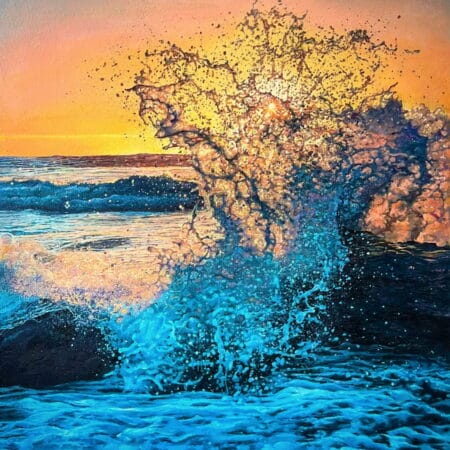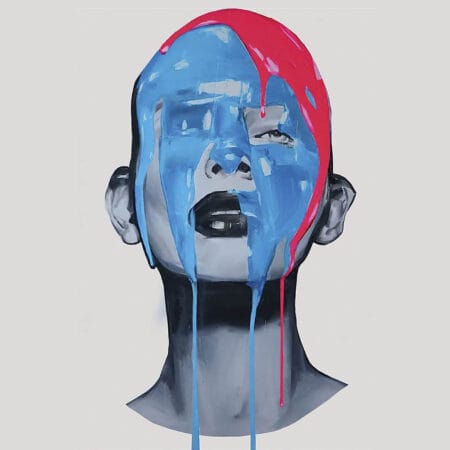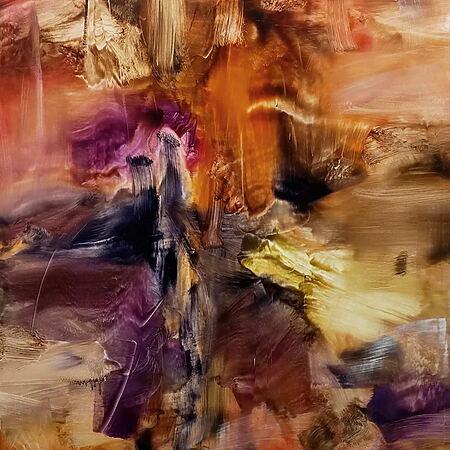In the world of art there are works that are not only beautiful to look at, but also have an important historical meaning. In order to preserve the value and beauty of these works of art, care and restoration is essential.
Why the care and restoration of works of art is essential
Restaurant measures bring damaged or aging objects back into their original condition. Various methods and techniques a crucial role here.
Here the restorers into play. They have specialist knowledge and expertise to gently treat sensitive materials. They study at renowned institutes and learn both the history of art as well as the latest research results and technologies in conservation.
An example of frequent restoration projects are murals in museums that are about preserving culture and revealing information about past times. The restored works of art not only have a high cultural value, but also enable access to our cultural heritage.
The question of costs in the restoration is often a topic of discussions, but it is an investment in the preservation of our cultural treasures.
The role of museums in the preservation of art objects
Museums are far more than just places where works of art and artifacts are exhibited. They play an important role in our society and play an important role in promoting knowledge and education .
Due to their diverse offers, museums help us to better understand our history. A museum enables us to gain an insight into the past eras and understand the development of mankind.
Here, for example, we can marvel at antique relics or masterpieces of great artists . Not only does the cultural heritage of a region be preserved, but also promoted our understanding of various time epochs .

Photo of Amy-Leigh Barnard @amyb99, via Unsplash
In addition, museums serve as a platform to promote creativity. Visitors have the opportunity to become active themselves through interactive exhibitions and implement their own ideas. This not only promotes the personal development of each individual, but also contributes to social progress.
Another important aspect is to strengthen critical thinking by visiting a museum. The exhibits presented there encourage thought and offer space for discussions about different perspectives and interpretations of works of art or historical events.
This ability of the critical questioning is essential for an open society and for individual intellectual progress. In addition to all this function, museums also perform another crucial task: they preserve and maintain collections to maintain our cultural heritage. The preservation of works of art and artifacts ensure that future generations will also have access to this valuable legacy.
Museums thus play an indispensable role in the mediation of our past in subsequent generations.
Restorers and their well -founded expertise to maintain our cultural heritage
When it comes to preserving historical works of art, the restoration plays a crucial role. Through targeted measures, the cultural heritage is preserved and made accessible to future generations.
It is important that the restorers have well -founded specialist knowledge and expertise. You not only have to master the right methods and techniques for gentle restoration, but also understand the history and materiality of the art objects.
Institute for Restoration and Preservation Science
The renowned Institute for Restoration and Preservation Science at TH Cologne ( Link ) offers extensive training for this. Students have the opportunity to learn and restore wall paintings.
The focus of the murals and cultural assets made of Stein offers an extensive range of courses that aim to meet monument preservation , preservation and restoration This specialty covers a wide range of topics that deal with the preservation and restoration of historical wall paintings and the cultural heritage of Stein.
During this studies, the students get to know different techniques of wall painting, from traditional to modern methods. You acquire well -founded knowledge of materials such as colors, pigments and binders as well as tools and techniques for cleaning and restoring stone surfaces.
Another focus is on understanding the historical contexts of wall paintings and other Steinerner works of art. The students deal intensively with art -historical aspects and get to know significant works by different epochs. This will develop a feel for the value of these art forms as part of our cultural heritage.

photographed by Zalfa Imani @zalfaimani, via Unsplash
In addition, this field of study also deals with questions of monument protection and the sustainable preservation of this valuable cultural asset. The students get to know legal framework conditions that are relevant for dealing with historical buildings, including regulations for protection against environmental damage or improper handling during a restoration.
Classic Foundation Weimar
The restorers of the conservation, restoration and art technology have far -reaching tasks. In addition to the care and care of historical cultural assets from the collections of the Weimar Classic Foundation, they are significantly involved in complex processes.
These deal with exploring, preserving, preserving, presenting and conveying exhibits. Furthermore, they take care of national and international rental transport as well as the development and implementation of restoration concepts.
Thanks to their academic training, the specialist restorers can examine the material and analyze manufacturing techniques. This allows questions about authenticity, the condition and aging of the exhibits.
In the following video, the restorers take us in the Weimar city palace to Goethe's trip through Italy, where he made many of his drawings. In a restoration workshop, asked for this:
The interdisciplinary cooperation with other specialist areas such as mental, engineering or science enables a solid basis for the preservation of the extensive inventory. You present the results of your projects and research work to the public by participating in scientific publications, press events and your own events.
The Weimar classic Foundation has an impressive collection of around 5,500 paintings from the period around 1500 to the present day. The term “painting” refers to various materials such as oil painting on textiles, wooden panels and sculptures, metal, paper and ivory for miniature paintings.
In addition to classic painting, the collection also includes medieval sacred objects and icons. Unfortunately, only some of these exhibits are permanently accessible to the public in the foundation's properties. Most of the inventory is kept in the depot.
The department for the preservation and restoration of the artisanal inventory of the management museums is also of great importance. Around 45,000 art and cultural objects are carefully examined here to preserve their beauty and historical importance.
The team of this department relies on a large number of imaging procedures and scientific methods to precisely analyze the condition of the objects. This makes it possible to uncover any traces of work, materials and causes of damage. The studies are extremely precise and thorough.
Parallels to industrial processes can be drawn here. After all, cleaning processes and residual defense analyzes are not only an indispensable component in cultural preservation, but in the production of almost all industrial goods.
In order to check the success of cleaning processes, TASCON GmbH, for example, carries out surface analytical examinations. The residual defense analysis is used using TOF-SIMs Imaging to recognize contaminants such as film and particle deposits on components, to locate and to quantify under specific conditions. This method enables the company to convince their cleaning results and, if necessary, optimize cleaning processes.
Similar technological processes are also likely to play a role in the preservation and restoration of the handicraft inventory.
In the corresponding department of the Klassik Foundation Weimar, every single art or cultural object is considered in detail to ensure that it remains in the best possible condition. Knowledge of past restoration interventions also plays an important role.
Thanks to this intensive research work, possible dangers can be recognized in good time. For example, in a painting, it can be determined whether cracks have formed in the color application or whether the material used is susceptible to moisture.
In addition, this detailed analysis also provides insights into the history of the objects of the objects itself. The study of work traces can obtain information about manufacturing techniques - a valuable contribution to research into our cultural heritage.
In addition to the painting restaurant, there are also six other departments under the museum directorate of the foundation:
- Textile and leather
- Furniture
- graphic
- Craftsmanship
- Preventive preservation
- Deposit management
Restoration departments in large German museums
The state museums in Berlin are also a renowned institution that is dedicated to preserving and researching works of art.
In order to do justice to this purpose, the museum has its own department for restoration & art technology . This department is responsible for properly maintaining and developing the diverse collections of the museum.
But not only in Berlin is great emphasis on the restoration of art. German Museum in Munich and the State Art Collections also set up their own restoration workshops in order to be able to optimally look after their different departments.
There are many other museums in Germany with significant restoration departments. Depending on the topic and specialization, these facilities have unique tools and techniques for the preservation of their valuable exhibits. Both in the mentioned and the museums listed below, large restoration departments with highly qualified experts can be found in their field:
- German Historical Museum, Berlin
- Art History Museum, Berlin
- Städel Museum, Frankfurt am Main
- Art Museum Bonn
- Städtische Galerie im Lenbachhaus, Munich
- State graphic collection, Munich
- Museum of Art and Trade, Hamburg
- Roman-Germanic Central Museum, Mainz
- Museum of Art and Cultural History, Dortmund
Challenges in the restoration of works of art
The restoration of works of art presents restorers with numerous challenges. Especially with sensitive materials such as wall paintings, you have to be extremely careful to avoid damage.
painting
Paintings can be damaged on the basis of various factors, including lighting, moisture and improper handling. One of the greatest difficulties in restoring paintings is to restore and maintain the original color palette of the artist, while damage such as cracks, flaking and discoloration must be remedied.
Restorers often use special colored agents and techniques to precisely adapt the colors and to repair damage invisibly.
Sculptures
Sculptures consist of various materials such as stone, wood, sound or metal and require different approaches in restoration. Environmental influences such as moisture, extreme temperatures and pest infestation can stone and wood sculptures .
A challenge in the restoration of sculptures is that the use of protective agents often lost the original surface of the material over time. Restorers must be able to carefully remove these layers in order to restore the original surface of the artwork.
Photography
Photos can be damaged by light, moisture and improper treatment. A difficulty in restoring photos is to preserve the original color palette and repair discoloration, scratches and surface damage.
Restorers often use digital techniques for the restoration and reproduction of photos.
Installations
Art installations are a challenge for restorers because they often consist of different materials and are sensitive. Metal, wood, plastic or organic fabrics can be used.
Special care is required to maintain integrity and originality.
Graphics and prints
Works of art such as graphics , prints , copper engravings or lithographs are susceptible to damage caused by moisture, pollution and light.
Restorers are often faced with the problem of eliminating stains or cracks and applying special techniques such as the neutralization of acids or the preservation of the paper in order to obtain the originality of the artwork.
Basic challenges
Artifacts and works of art consist of various materials such as metal, glass, ceramics and textiles. A difficulty in the restoration is that they are often very sensitive and require special treatment.
Another problem is that art objects are often embedded in a larger context and can have cultural importance. Therefore, restorers not only have to take into account the physical properties of the object, but also understand the historical and cultural background.
Methods and techniques for gentle conservation and restoration of sensitive materials
The preservation of sensitive materials requires special methods and techniques to gently treat the works of art. One of these techniques is the preservation in which the object is stored in a controlled room to avoid further damage.
Conservation - how are art objects in museums stored and maintained?
The correct storage and maintenance of works of art is of crucial importance in order to maintain your beauty and value in the long term. When it comes to keeping these valuable works safely, you usually use air -conditioned storage rooms . These special rooms ensure an optimal environment for the works of art by protecting from harmful influences such as light, moisture and temperature fluctuations.
Protection against light plays a particularly important role in this. Because ultraviolet light can let colors faded and damage surfaces. That is why the works of art are presented or stored behind special glass or plexiglass
This material filters out the harmful UV light and ensures that the colors remain alive longer.
Moisture also negatively influence the condition of a work of art. A humidity that is too high can lead to paper rolling or the wooden frame is forgiven. constant relative humidity is set in the storage rooms - usually between 40% and 60%. As a result, the climate remains stable and possible damage caused by moisture can be avoided.
Temperature fluctuations are also a risk of the integrity of the works of art. Extreme heat or cold can lead to cracks in the material or have adhesives loosen. In the air -conditioned storage rooms, care is therefore taken to ensure that there is a constant temperature - usually between 18 ° C and 22 ° C. This keeps the material stable and damage is minimized by extreme temperatures.
In addition to the correct storage, regular inspection and cleaning of the works of art of great importance. These measures not only serve to remove dust or pollution, but also enable experts to identify possible damage at an early stage .
Restorers carefully monitor the works of art and, if necessary, treat them professionally if they have become damaged or have become unstable due to aging.
Once the damage is there, the restoration comes into play
The restorer plays a crucial role in the restoration of works of art. With his expertise and expertise, he ensures that sensitive materials are gently restored.
The restoration of works of art requires a deep understanding of the various techniques and materials with which they are made. Restorers in a museum must be able to analyze original state of a work of art
This includes cleaning, material replacement, repair of damage and even the restoration of the original colors and shapes. The restorers are also working to optimally store and present the works of art as well as to research new methods for preservation.
Protection of works of art during an exhibition
Works of art in a museum are invaluable and must therefore be protected from any dangers. This applies especially during well -attended exhibitions. For this reason, various security measures taken to ensure that the works of art are well preserved.
One of the most important measures is to use physical security technology such as alarm systems , video surveillance and access controls . These serve to deny unauthorized persons and prevent potential thefts or vandalism acts.
With these technical precautions, suspicious activities can be recognized immediately and corresponding measures can be initiated. In addition, there are special safety precautions within the museum itself to minimize damage to the works of art by moisture, air conditioning, light and other environmental influences.
An example of this are the S, the S, the S -constructed showcases for sensitive works . These showcases offer additional protection against undesirable external influences. The works of art in the showcases are secured with a combination of physical and technical measures.

photographed by Mika Baumeister @kommumikation, via Unsplash
, CCTV cameras are often used, which can recognize movements and thus ensure complete monitoring. In addition, the glass of the showcases is reinforced or even consists of special safety glass to make possible attacks on the exhibits more difficult.
Another important aspect of the security system in museums is fire protection . For this purpose fire registration systems installed that send immediate notifications to the fire brigade in the event of smoke development. This can react quickly in an emergency and possibly prevent greater damage.
Uninvited guests - pest management in a museum
Pest infestation can lead to irrevocable damage to exhibited exhibits, which can lead to an enormous loss of cultural and artistic value. In addition to security management and preserving departments, it is therefore that museums recognize the infestation of pests at an early stage and effectively counteract them to protect their collections.
In museums you will encounter different types of pests that feed on organic materials such as wood, paper, textiles, leather, bones, feathers and insects. Typical pests include silver fish, carpet beetles, clothes moths, household beetles and woodworms as well as paper fishing.

photographed by Mikkel Frimer-Rasmussen @Mifrira, via Unsplash
These can cause significant damage to exhibits and thus destroy historical and cultural value.
It is therefore crucial for museums to recognize and combat early infestation to protect their collections.
The cost question in art restoration: investment or waste?
The cost question in art restoration is an important aspect that is often discussed. Some argue that the financial resources for the restoration of works of art could be better invested in other areas. But this view neglects the invaluable value that restored works of art have for our cultural heritage.
Professional restoration not only preserves historical objects, but also receive information about past times and techniques.
It also enables a look at history and promotes research in this area.

Owner and Managing Director of Kunstplaza. Publicist, editor, and passionate blogger in the field of art, design, and creativity since 2011. Successful completion of a degree in web design as part of a university program (2008). Further development of creativity techniques through courses in free drawing, expressive painting, and theater/acting. Profound knowledge of the art market through many years of journalistic research and numerous collaborations with actors/institutions from art and culture.


















